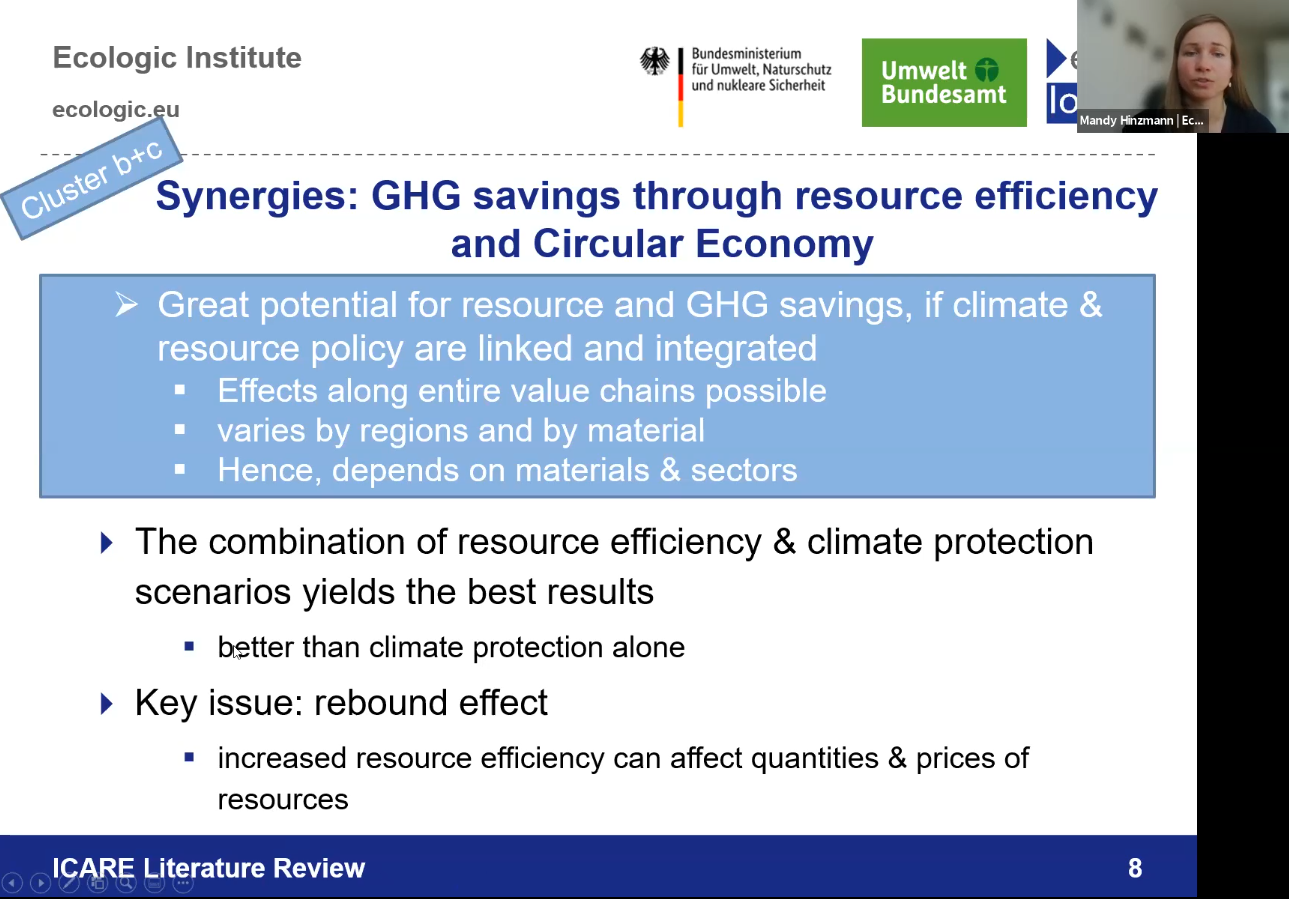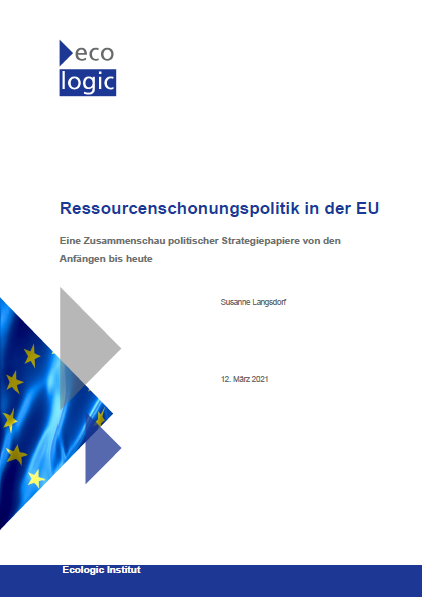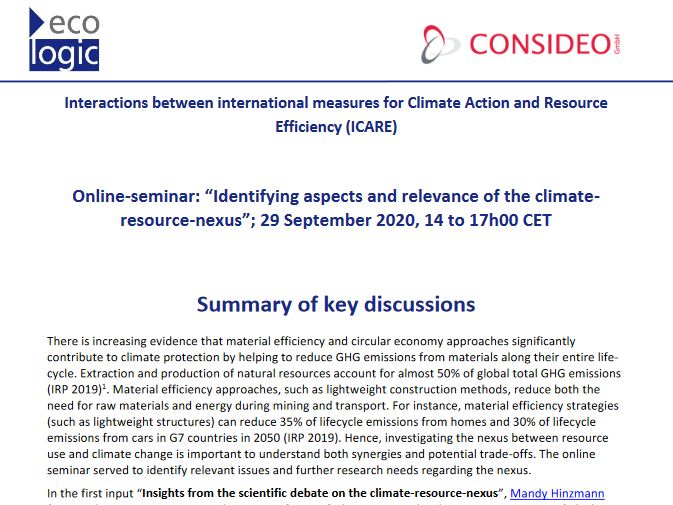Climate Protection and Resource Conservation
Analysing the climate-resources nexus and interactions between international policy measures
- Publication
- Citation
Hirschnitz-Garbers, M.; A. Araujo Sosa; M. Hinzmann; E.K. Velten; M. Freundt; L. Duin and K. Neumann (2020). Climate Protection and Resource Conservation – Analysing the climate-resources nexus and interactions between international policy measures. Ecologic Institute Discussion Paper, Berlin.
Climate protection is one of the most important, if not the most important, contemporary environmental policy issues, both on the national and the international level. While the Paris Agreement has marked a great success for climate protection in the international arena, there is a clear need to step up action in order to achieve the committed emission reductions. According to the International Resource Panel, natural resource extraction and processing account for more than 50% of total global greenhouse gas (GHG) emissions. Thus, resource conservation and circular economy policy, e.g., increasing recycling or incentivising light weight construction methods, hold promising potential for reducing GHG emissions, and hence for climate protection.
While resource conservation is not as well established in international policy as climate protection, its importance as a relevant strategy for achieving climate goals is being increasingly recognised, for instance during G7 and G20 talks. Despite this encouraging development, interactions between climate and resource policy – the so-called 'climate-resource-nexus' – still need to be much better understood and systemically analysed. So far, the climate-resource nexus has mostly been explored from a scientific perspective, which mainly centred on the Global North. Hence, further perspectives from the Global South are needed to better understand how these policy fields and their interrelations can be configured in different contexts.
Against this background, as part of the ICARE-project (Interactions between international measures for Climate Action and Resource Efficiency), the present study aimed to investigate key findings on the climate-resource-nexus from literature and identify international measures for climate protection and resource conservation. The study then analysed these measures as regards (i.) possible interactions (synergies and trade-offs) between them and (ii.) their potential relevance and fit for different world regions.
A literature review on the climate-resource-nexus revealed three main thematic clusters related to the nexus:
- a) Investigation of the resource demand of climate-friendly technologies;
- b) Potential greenhouse gas savings through resource efficiency;
- c) The role of circular economy approaches for climate change mitigation.
Via literature review and expert interviews with regional experts mainly from UN institutions, but also from environmental NGOs and academia we identified more than 10 relevant international policy measures and assessed their regional relevance, fit and specificities. This study portrays a mosaic of different climate and resource policy pathways, starting from differing levels of policy ambition and socio-political feasibility. Different policy pathways start from a need for more awareness raising and education for the population in most regions (developing and developed alike) to creating the right and enabling infrastructures (from a stable grid to waste management infrastructure to safe outdoor leisure activities and public transport).



